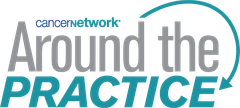
An Introduction to Treatment Strategies for Patients with NDMM
Nisha Joseph, MD leads an introduction to induction regimen options for patients with transplant-eligible NDMM.
Episodes in this series

Dr. Sagar Lonial: So, let's talk a little bit about Dr. Joseph, sort of the concept of triplet versus quadruplet. We're going to get to this discussion of how we as a group arrived at the induction therapy you talked about by talking about some data that's out there, but just educate our audience a little bit about what we're talking about when we say, "Three or four."
Dr. Nisha Joseph: Sure, so, historically, really, the standard of care for induction has been triplets, namely RVd, which we have looked at in our own dataset, which shows really impressive response rates and advocacy. And so, moving forward, this kind of question of triplets versus quadruplets, meaning four drug regimens. And so, can we add an additional drug to the RVd backbone to try to enhance that response and therefore prolong that PFS1 benefit, which is the goal?
Dr. Sagar Lonial: And of note, when we tried to do that with drugs like cyclophosphamide or a trial we had at our own center using HDAC inhibitors, the toxicity made that a little bit more challenging. So, the immune therapy options, potentially, are changing our ability to do that kind of work. So, Dr. Kaufman, you led the GRIFFIN study for our center. If you want to talk about how that, I think, launched a new era of induction therapy.
Dr. Jonathan L. Kaufman: The GRIFFIN study was a phase-2 randomized study comparing RVd, early autologous transplant, and consolidation with RVd, and then single-agent lenalidomide maintenance with all of those components with daratumumab added. And the primary endpoint of the study was stringent CR rate after consolidation. So, basically, equivalent to our day 100. And what the study showed is that, by adding daratumumab early, we're able to increase the stringent CR rate from 32% to 42%. And what's so important about our data is that 32% post-transplant, essentially, day 100 stringent-complete response rate was the same exact response rate that we saw in our data. So, that gave us a lot of confidence that adding daratumumab would add efficacy, at least, the deeper efficacy, because our response rates to either regimen, the overall response rate's so high. What we've seen with the updates of the data as the data has matured is that now that we see a clear PFS advantage- And we don't see any overall survival advantage. It's a relatively small study. It's unclear whether we'll ever see an overall survival advantage. But we've seen the clear response advantage that translated into a clear PFS advantage. Now, Dr. Nooka mentioned earlier that we have a slight difference in how we manage our patients compared to what we did on GRIFFIN.
Dr. Ajay Nooka: So, the GRIFFIN study had a second arm of maintenance post consolidation that received daratumumab and lenalidomide. So, if you look at the data from lenalidomide as a single agent as maintenance agent, so, the bar is set too high. So, what we don't know at this point is what the addition of daratumumab in the long run would add to what we already have from a PFS perspective from lenalidomide, but rather, could we use daratumumab at the time of a relapse, an early relapse, that would be a great segue for us to move at the time of relapse from lenalidomide maintenance to a three-drug regimen, or who knows if for quadruplet regimen down the line at that point with Dara as a backbone.
Newsletter
Stay up to date on recent advances in the multidisciplinary approach to cancer.















































































